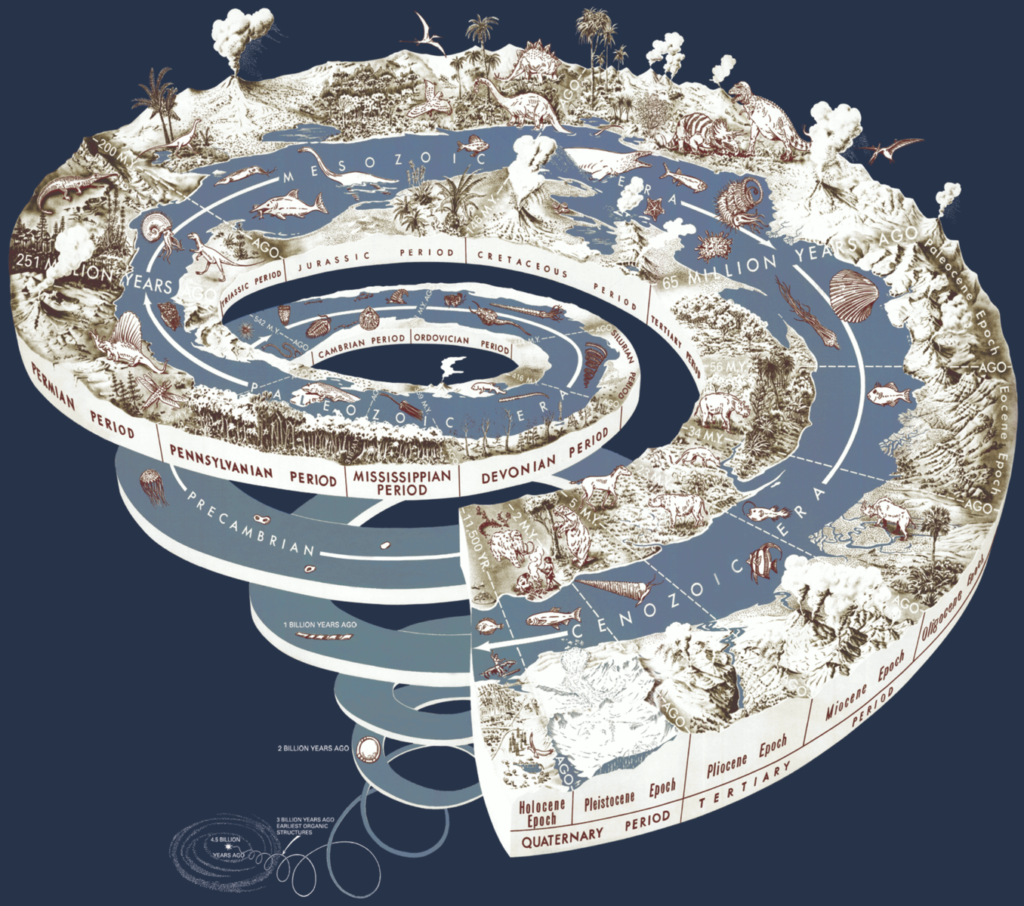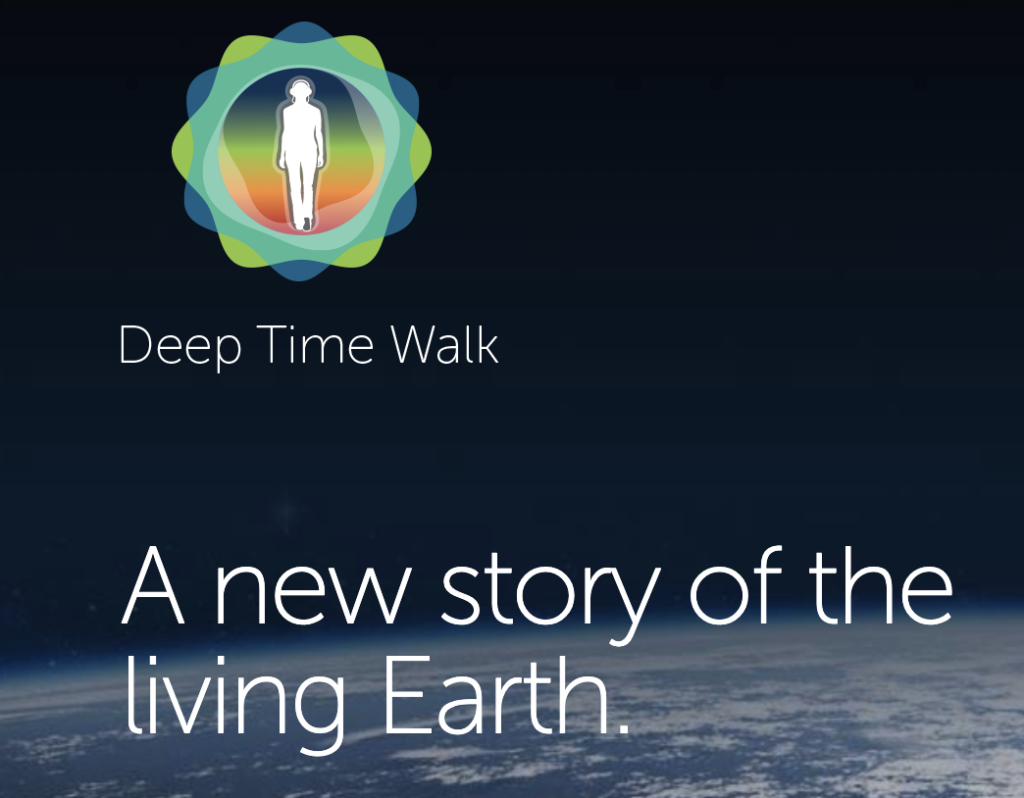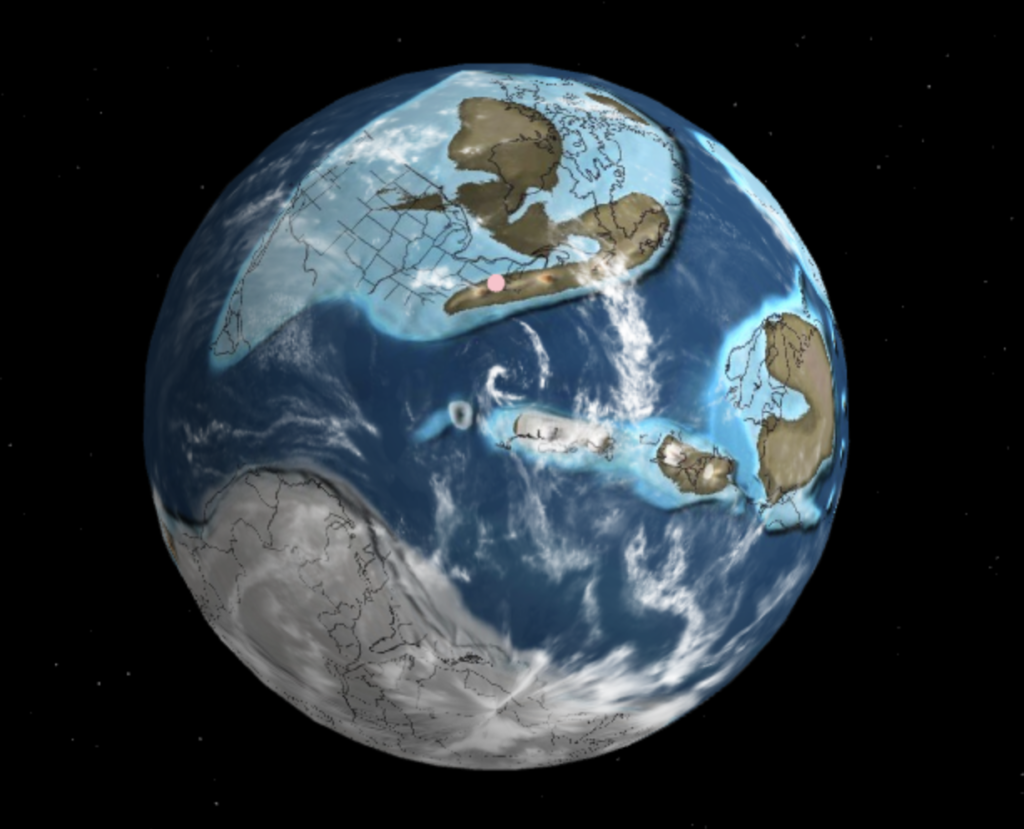
Deep time is a notoriously hard concept to grasp. Our lived human experience is grounded in a timeframe that is at odds with the geological time frame of millions or billions of years. Since geologists began figuring out the true scale of geologic time, they have tried to communicate this scale through a series of metaphors, maps, and visualizations. Famous examples of this include Carl Sagan’s Cosmic Calendar, and for children, Montessori’s Clock of Eras. Advances in mapping and data visualization technologies have enabled new forms of visual storytelling for understanding these time frames. Two visualizations have been recently developed that address the temporal depth and endurance of our universe in novel and effective ways.
Deep Time Walk
Deep Time Walk is an engaging and innovative app that transforms deep time into an embodied experience, a mobile virtual time travel. Listeners plug headphones in and walk the entire journey of Earth’s 4.6 billion year-old history in just 4.6km.

Deep Time Walk uses a dramatized dialogue between a questioning protagonist and patient scientist to explain complex topics in a relatable format. Written as a collaboration between playwright Peter Oswald and Dr. Stephan Harding, Deep Time Walk guides you to walk and encounter evolutionary significant events, from the emergence of volcanoes to the first appearance of oxygen-producing photosynthesis. You, the listener and walker, are frequently addressed, to check you are still following as you walk 2 million years in just 2 meters.
Narrative is a powerful tool for connection and understanding. By creating a story with relatable characters, Deep Time Walk removes the listener from the present and walks them into the distant past. The conversational (and sometimes poetic) storytelling produces empathy and connection, which works to ground the individual personally into this global enduring epic.
This translation of time into distance creates an effective microcosm by transforming the complexity of 1,000,000 years into the comprehensible and familiar metric of one meter. Through this, Deep Time Walk claims to help users understand ‘the destructive impact we are now having on the Earth’s complex climate in the blink of a geological eye.’
Ancient Earth
Ancient Earth, a temporal map of the world, approaches deep time differently. Built as an interactive tool, Ancient Earth works to visualize the extensive geographic and tectonic shifts of the last 750 million years and maps them comparatively onto the globe of today. Developed by Ian Webster, the curator of the world’s largest digital dinosaur database, with the use of C.R. Scotese’s paleogeographic maps, Ancient Earth captures deep time in physical space, on Earth.

Ancient Earth catapults the viewer back to the emergence of single-celled organisms, such as green algae, in the Cryogenian ice age 750 million years ago, before leaping ahead 320 million years to the Silurian Period, when mass extinctions coincided with progression of complex life on land. What is most striking about this ancient world is that it is barely recognizable; it looks disarmingly dark, cold and watery.
Sliding forward to 240 million years ago, the user encounters another equally distorted Earth; one landmass, Pangea, dominated as the singular supercontinent that encompassed the world. The map has plenty of useful features, from simple yet effective dropdown time jump options, such as the evolution of the first flowers, to location-specific searches, enabling users to track the journey of their hometown across both time and space. As Meilan Solly writes in a piece for The Smithsonian, “interested parties can now superimpose the political boundaries of today onto the geographic formations of yesteryear.”
What both Ancient Earth and Deep Time Walk achieve is compelling because of their user experience. Both engage directly with the individual and bring them into a narrative: Deep Time Walk is an embodied experience and drama; Ancient Earth encourages you to map your hometown across the ages. By making it relatable and personal, these apps start to help us conceptualize deep time.